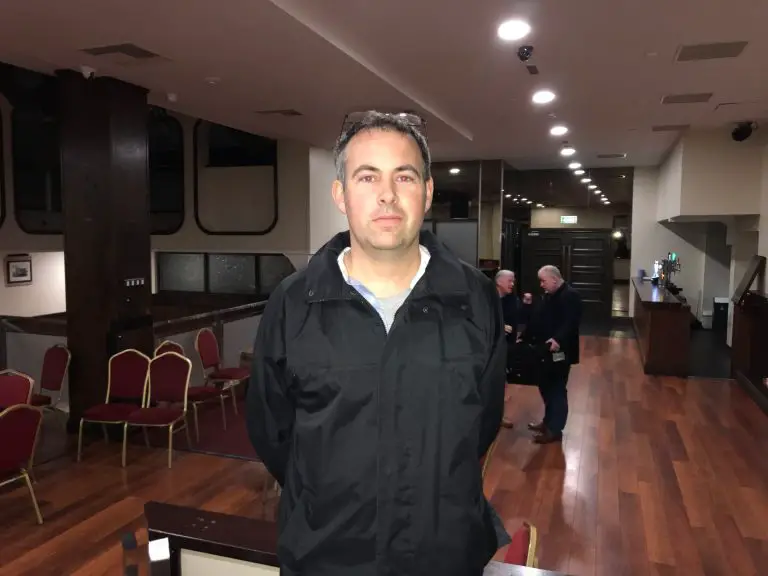Beef farmers in Clare are “on tenterhooks” with the creation of a new group labelled as the “last chance” for the struggling sector.
In November, the Beef Plan Movement was established with 790 Clare farmers signing up since then. They have produced an 86 point draft plan for beef which has been brought to the attention of the EU Commissioner for Agriculture and Rural Development, Phil Hogan. The Minister for Agriculture, Food and the Marine, Michael Creed. The plan’s objectives centre around regaining control of an animal from birth to slaughter and beyond, returning a cost of production price plus a margin as a minimum and regaining respect within the beef industry.
Speaking to The Clare Echo, Joseph Woulfe who is the county representative with the group said such control and lost has gradually been taken from farmers. “That has been a slow erosion over the last 20 to 30 years, it sped up at certain intervals like when we had Beef Tribunals, when we had horse meat coming through the industry, a massive closure of abattoirs so competition became less and less, it has eroded down to the point where there is only a handful of people organising the industry and keeping control of the industry”.
A native of Quilty, Joseph became the Clare Chairperson after attending the first meeting of the group. In recent months, more and more farmers within the county are signing up to the group. It has gone from a one person committee in Clare to now boasting 14, a door to door campaign is underway and more houses will be visited in the coming weeks. “Like a farmer casting seeds on to a field you don’t know what seeds are going to grow but you cast out enough that enough will take root”.
Joseph took over the family farm following the death of his father Charles in 2016, the family have been on the farm for 350 years. He explained one of his reasons for joining the movement. “I was given a two year old heiffer when I was 13 and I got £630, I sold a two year old heiffer in the mart three years ago, same age same size and weight and I got €1100. With the currency exchange, £630 is nearly €1100, I realised since 1993 to 2015, the price hasn’t changed and it really dawned on me then”.
Prior to its creation, the group founders maintained it needed 40,000 beef farmers to row in behind its proposals. Currently the figure stands between 15,000 and 16,000. “What’s sped things up has been the likes of farming breeder groups like Angus, Limousin, Shirley when they get behind you with their 3,000 or 4,000 members. We have nearly all of the breeding societies behind us. It takes people time to sit down and chat before they initially think what this new group is about, people’s minds are quite alike when it’s come down to what it has that being survival. People would maybe fight over certain points ten years ago but now at the present time they are looking at the bigger picture which says farmers are not making ends meet and they are going out of business, they are able to push things aside to focus on the big issues”.
According to the thirty six year old, “quite a number” of the farmers in the group are also members of the Clare IFA. He felt the Beef Plan Movement can ease the IFA with its duties. “My own feeling with the IFA is that it has quite a big task, agriculture is not a small thing, the largest sector of agriculture is worth €13.3 billion within that the beef industry is there in at around €3.3 billion. IFA has to take care of fisheries, crops, dairy, forestry, they cover an awful lot and perhaps they are spread too thin. Farmers were annoyed, the number of farmers in the IFA has dropped from in 2012 88,000 down to now in 2019 72,000, the numbers are dropping off because they’re not seeing the result”.
Woulfe admitted beef farmers “have been struggling for a while. I have to go back to 2017 and say that we experienced incredibly wet weather, the summer closed around July it just turned wet and some people didn’t get the second crop cut, some people may have scraped it by and cut it. The cattle were in very early in 2017 which led into 2018 having a big requirement for feed and feed not being there, it had to be imported from other countries. In 2018 we had a lot of storms, we had the snow in March, a drought in May and June which led to low grass yields, it has been terrible, Brexit has hit in, a drop in cattle prices and demand. There is talks that a lot of farmers as part of a tactic to survive, they’ve not puts cows in calf last summer so they would have a less of a demand for feed in the winter in case the winter turned out to be as nasty as the previous year. They are on tenterhooks”.


















